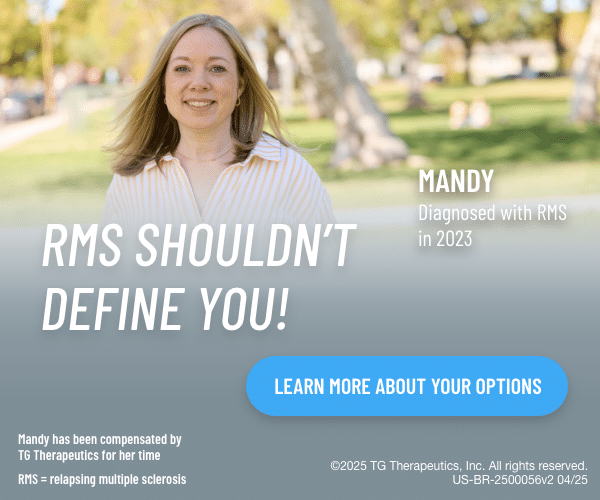November 1, 2014 /
Researchers
at the University of California, San Francisco, have developed a new tool that
allows clinicians to track an individual’s disease course over time and compare
it to a core data set of other MS patients. The tool is currently in
beta-testing at UCSF.

CYNTHIA MCKELVEY
Pierre-Antoine Gourraud, Ph.D., of the University of California, San Francisco, and I huddled around his iPad and gazed at the screen. On it was a magnetic resonance imaging scan of an anonymous patient’s brain. The scan was organized in three panels, showing me front, side, and middle cross sections. With my index finger, I turned the scan around so I could see it from all angles and slid the planes up and down, back and forth, to move through the three-dimensional scan.
“That was a very big, technical challenge of the application,” Gourraud said to me as I watched the brain expand and the sulci undulate as I moved the sliders through three different planes. This interactive three-dimensional MRI scan is one of many features on BioScreen, the new mobile application Gourraud and his colleagues are developing. A description of the device was published online ahead of print in the journal Annals of Neurology (Gourraud et al., 2014).
BioScreen is a tablet-based tool that will allow physicians and their patients to track the course of the disease within the individual patient, and then compare it to a large data set consisting of over 600 patients. The core data set comes from information gathered from UCSF researchers in the Expression, Proteomics, Imaging, Clinical (EPIC) study, a longitudinal observational study that collected detailed data spanning MRI, clinical data, genomics, and biomarkers over the course of 10 years.
In his grandest vision, Gourraud imagines a world where every clinician has access to this core data set, which he plans to expand using data from clinics across the globe. Any clinician could then compare the disease course of his or her individual patient with that of the entire group. In the current prototype, the comparison group can be narrowed down based on a number of factors, including but not limited to age, gender, and Expanded Disability Status Scale (EDSS) score.
~~~~~~~~~~~~~~~~~~~~
Keep CURRENT and up to date,
with MS Views and News – OPT-IN here
.
.
.
Visit our MS Learning Channel on YouTube: http://www.youtube.com/msviewsandnews
Stay informed with MS news and information - Sign-up here
For MS patients, caregivers or clinicians, Care to chat about MS? Join Our online COMMUNITY CHAT



